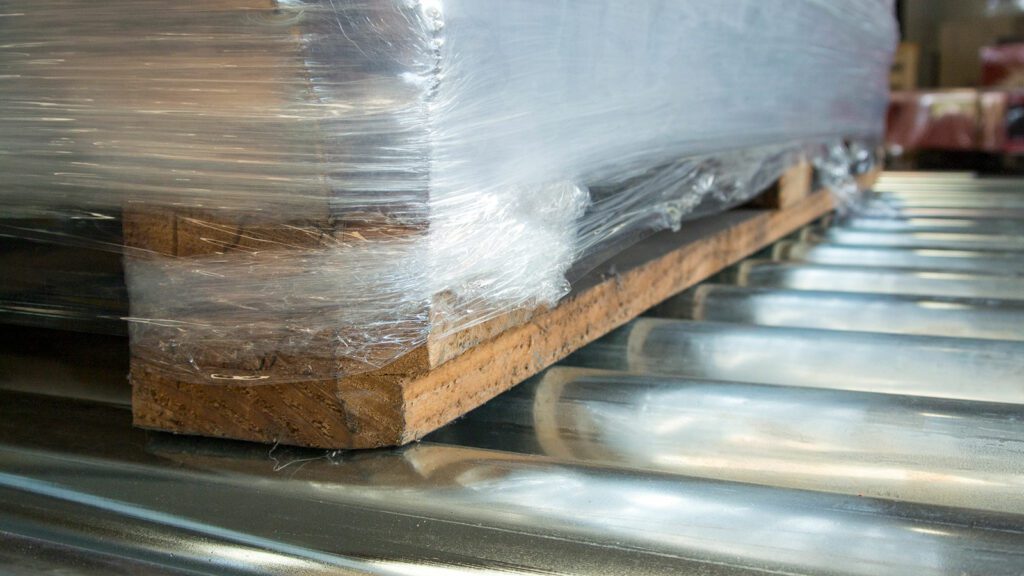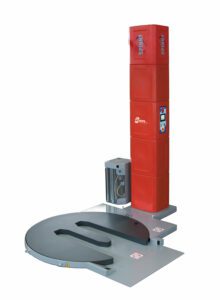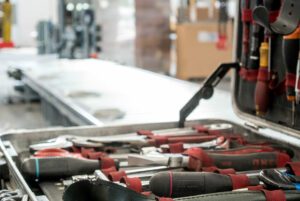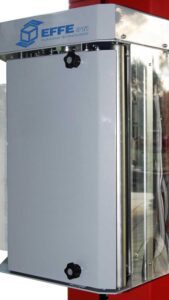A simple guide to choosing a wrapping machine
L’imballaggio è un’esigenza ormai consolidata per la protezione del prodotto per la movimentazione, il bloccaggio di prodotti instabili disposti su pallet, la protezione del prodotto da agenti atmosferici e ogni situazione che richieda l’utilizzo di pellicola esterna. Scegliere una avvolgitrice non è però sempre facile.
There are many types of packaging, Effe3Ti mainly deals with winding, heat shrinkage in chamber furnaces and systems strapping and canning.
It is essential for the customer who wants to consider purchasing a machine to have an easy-to-use guide to help him choose the right machine.

Automatic or Semi-automatic?
The first factor to consider when choosing a wrapping machine is the amount of work it will be subjected to. Generally speaking, you can choose a machine semi-automatic when the amount of work reaches a maximum of 20 pallets/h processed, while a machine automatic It turns out to be the right choice for 50 pallets/h and beyond.
- The automatic machines sono caratterizzate da funzionamento completamente autonomo con carico, avviamento, ciclo e scarico automatico. La macchina automatica dovrà essere protetta con reti e con barriere di sicurezza “muting” come richiesto dalla normativa vigente al fine di salvaguardare l’operatore durante la fase di ciclo. Effe3Ti fornisce, a richiesta, linee automatiche complete di trasporti a catena o rulli, con tutti i sistemi di sicurezza richiesti dalle normative (inclusi mercati extra CEE EN).
- The semi-automatic machines sono caratterizzate dalla versatilità di utilizzo in qualsiasi condizione il Cliente debba operare, hanno la possibilità di avere un telaio “inforcabile” per essere facilmente trasportate da un reparto produttivo a un altro e inoltre esiste la versione per tavola rotante sagomata per l’alloggiamento di forche di carrello. Il carico e lo scarico del pacco da avvolgere sono a carico dell’operatore come l’avvio ciclo a pulsante posto sul quadro di controllo sulla colonna della machina. Le macchine semiautomatiche non richiedono l’utilizzo di reti di protezione poiché le velocità dei movimenti in gioco sulla macchina sono tutte inferiori a quelle definite dalla normativa e, in fase di progettazione, sono state studiate soluzioni per portare in sicurezza ogni movimento.
Table or Rotating Arm? …or Self-Propelled Robot?
The second factor that we can consider when choosing a wrapping machine is the choice of the type of machine. The two main large families include a rotary table or a rotating armIn the first, the pallet of product is loaded onto a table that rotates to allow for wrapping, while in the second, the pallet remains stationary while an arm rotates around it, applying the stretch film.
- We generally use a machine with rotary table when the weight of our pallet of product to be wrapped does not exceed 1500/2000 kg. The load capacity of a rotating table has a limit and even if reinforced above a certain weight it becomes necessary to turn to another type of pallet wrapper.
- We generally use a machine with rotating arm when the weight of the pallet to be wrapped exceeds 1500/2000 kg. However, this is not the only reason. In fact, although table machines, especially automatic ones, are equipped with very advanced rotation management systems, it may be right to orient yourself towards the rotating arm when we are dealing with very unstable products.
A separate discussion must be made regarding the self-propelled pallet wrappers (robots). These special machines, in fact, are equipped with wheels and powered by high-performance batteries that allow them to be moved wherever you want. They are not “minor” machines at all, in fact they can automatically wrap the pallet of product according to advanced wrapping programs. Choosing a self-propelled wrapping machine allows you to wrap your products without having to move them.
Do we save stretch film?
It is not only an ecological choice to opt for a saving of stretch film. The consumer product has in fact a significant impact on the company's logistics expenses and represents a "hidden cost". Let's see what the possibilities are.
Film consumption depends on the type of reel holder installed on the pallet wrapper. The economic model has a reel holder group with pre-stretch (this is the name that defines the group that supports the reel and dispenses the processed film between the rollers on the package to be wrapped) mechanical or with magnetic brake. This model has only the tension adjustment of the film between the machine and the package.
Il modello più performante è sicuramente il motorized pre-stretching, available with one or two engines.
Il prestiro motorizzato con un motore ha il rapporto di prestiro fisso, ottenuto tramite la distribuzione del moto dei rulli con ruote dentate. Si possono avere diversi tipi di rapporti di prestiro in base al rapporto di riduzione tra le ruote dentate (rapporto modificabile con la sostituzione della coppia di ingranaggi) ovvero se dalla bobina vengono svolti 100mm di film, dopo il passaggio tra i rulli motorizzati lo stesso raggiungerà una lunghezza di 300mm (nel rapporto 200%) con un significant film savings. The pre-stretching with two motors easily reaches a ratio of 400%.
The film can be placed manually on the package to be wrapped (in semi-automatic machines) or a pair of clamps locks the film on the rotating table for dragging during the wrapping cycle.
Film cutting can be manual or automatic with hot wire enabled only during the cycle, at the pre-set time.
The sealing of the film flap that remains at the end of the cycle is done either manually or automatically based on the Customer's needs. The sealing pad, at a temperature of 115°C, automatically seals the film flap on the film previously wrapped on the package. If the package to be wrapped is not homogeneous, a contrast plate for the welder is placed between the pad and the package in order to protect the product.
What do I need to choose a wrapping machine?
Having said all this, which is the best machine? In reality, the most sensible advice is to tell one of our qualified technicians what you need, who will certainly be able to suggest the right solution. There are countless needs and just as many possibilities for managing them, perhaps combining the machine with one or more accessories that make it perfect for the job that needs to be done.
A (incomplete) list in short:
- Easy – semi-automatic machine, rotary table, mechanical, magnetic brake or motorized pre-stretch.
- S140 Plus – semi-automatic machine, rotary table, mechanical pre-stretch
- S140 Advanced – semi-automatic machine, rotary table, mechanical pre-stretch with magnetic brake, key control panel with display
- S300 – semi-automatic machine, rotating table, motorized pre-stretching (1 motor), control panel with keys and display
- S350 – semi-automatic machine, rotating table, motorized pre-stretching (1 motor) with “touch screen” control panel
- S500 – semi-automatic machine, rotating table, motorized pre-stretching (1 or 2 motors), “touch screen” control panel with automatic film welding and cutting system
- S2300 – automatic machine, rotating table with integrated motorized transport, motorized pre-stretching (1 or 2 motors) “touch screen” control panel
- Rotax 3300 – semi-automatic machine with rotating arm, motorized pre-stretching (1 or 2 motors)
- Rotax 5300 – automatic rotating arm machine, motorized pre-stretching (1 or 2 motors)
- Oscar – pallet wrapping robot, mechanical, magnetic or motorized pre-stretch brake.



